FALL 2019 | WEEK 1
The Adventure Begins
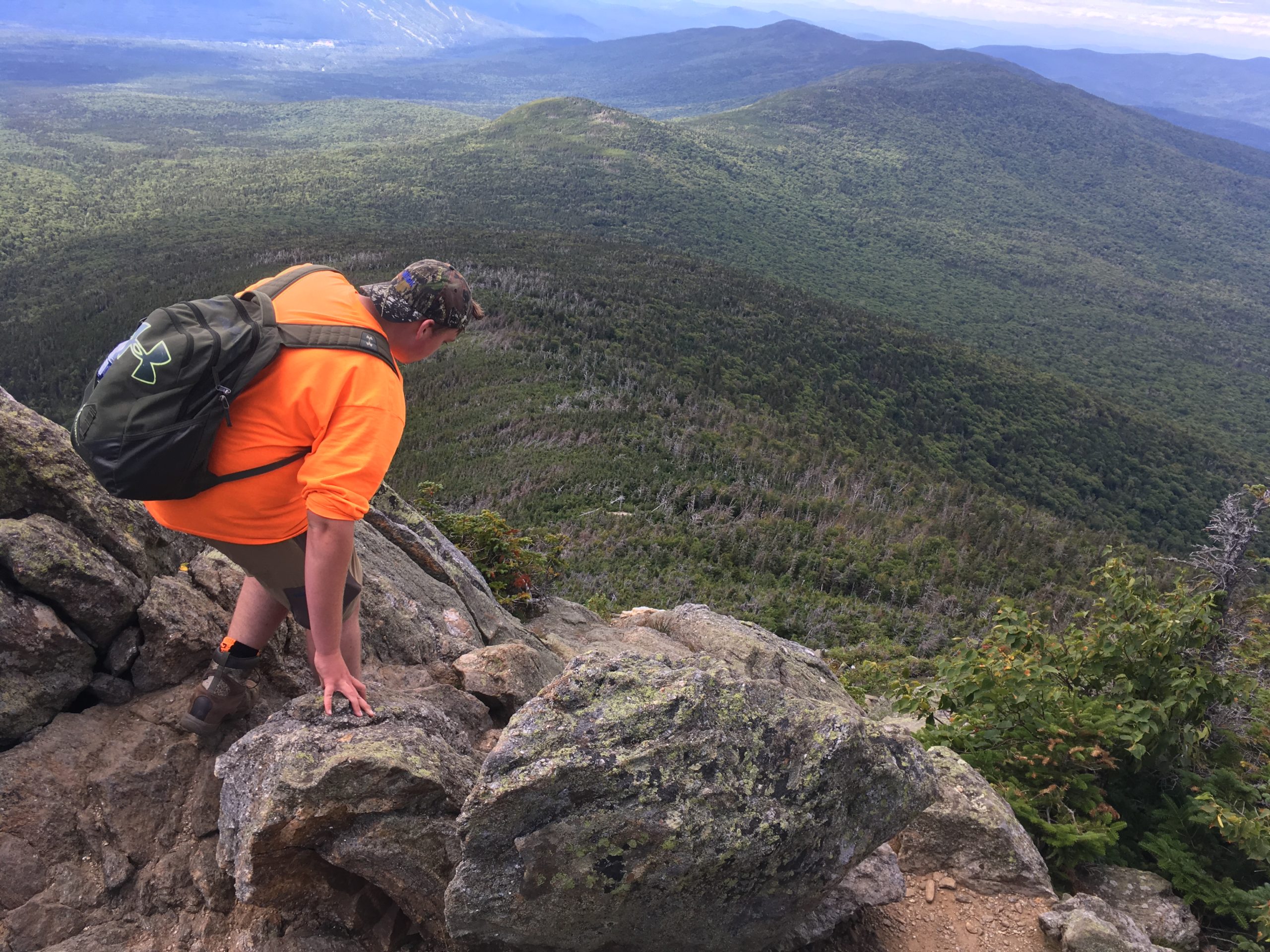
By Jessica Bakowski
This week was an adventure. The beginning of each school year holds expectations, hopes, and excitement about what is to unfold. Our Field Semester students jumped into this new experience with an enthusiasm for being immersed in their environment. Students embraced challenges on the ropes course and in the White Mountains that pushed them both physically and mentally, and created a supportive group environment. Students also explored their personal values related to the environment and their motivations for wanting to learn about both the natural world and their personal impact in the community.
Since an appreciation of nature is a foundational component of environmental study, students hiked up Mt. Jefferson in the White Mountains of New Hampshire this week. While many of our students are from this region, most had never had an experience quite like this one. Seeing the White Mountain National Park from the summit of Mt. Jefferson, many students marveled at both the expanse of wilderness and the beauty of the landscape. This trip also allowed us to study the geology and land use history of the region, one of our primary lessons this week. From this elevation, students were able to point out and discuss landslides, glacial erratics, and topography and identify some of the unique alpine plants in the region.
Back at lower elevations, students explored the Field Campus for the first time, where we studied both the ridgeline and the campus area for land use history. Looking at both the White Mountains in New Hampshire and higher peaks in Vermont, such as Burke, students were able to discuss how the geology of the two regions differs and in turn created different soil compositions and vegetation.
While the first half of the week focused on an appreciation of community and natural surroundings, the second part of the week looked at how we interact with our environment and each other. We looked at both historical and modern uses of natural resources and explored ways to reduce our impact through education and action. We discussed various definitions of sustainability, visited the Bethlehem landfill to understand management and impacts of the waste stream, and explored ways to reduce our impact at the Field Campus. These site visits were both eye-opening and impactful, and encouraged students to be engaged in their choices and how they influence our regional environment.
Monday, 8/26
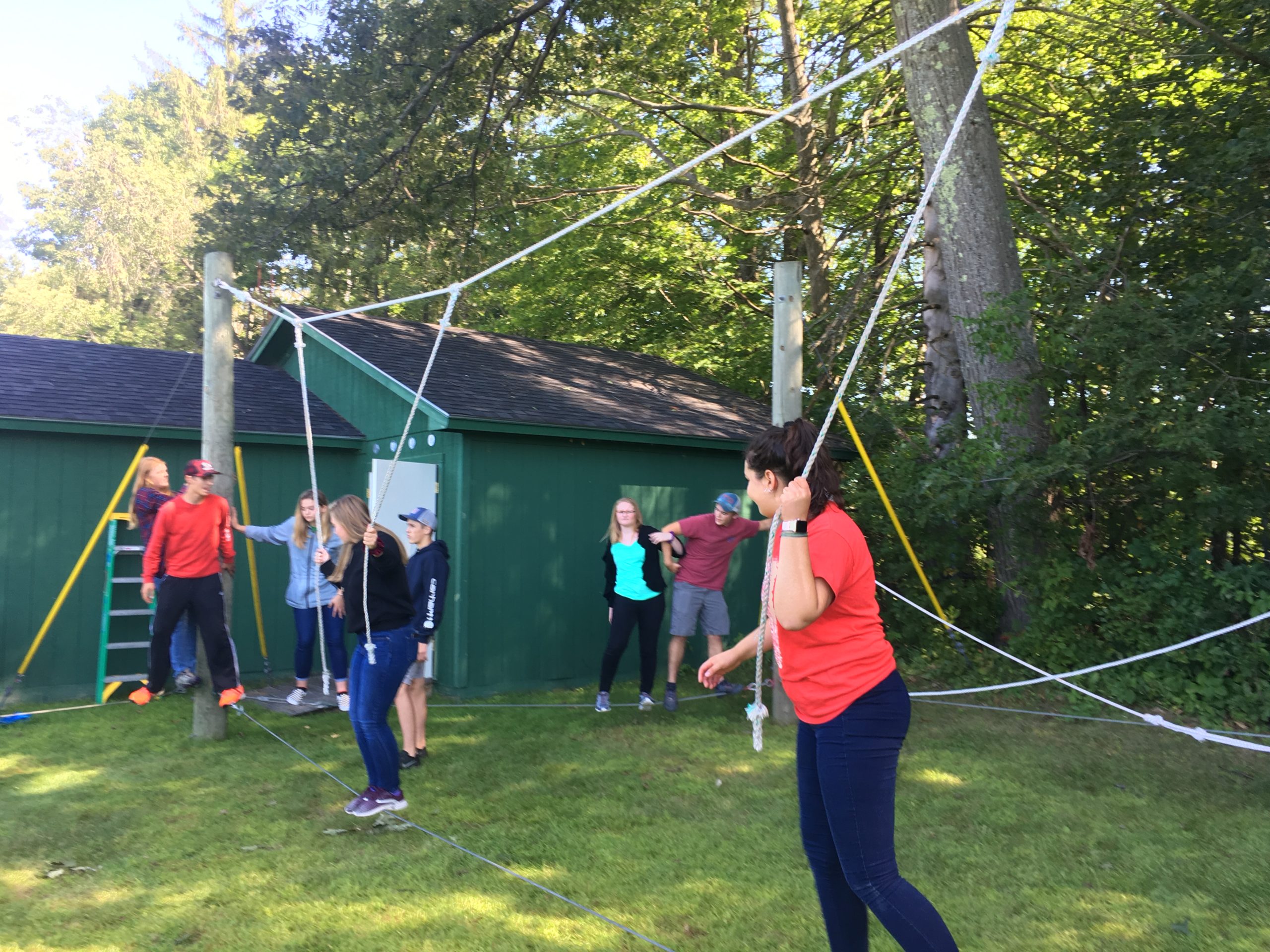
On Monday after getting to know each other’s names, we did a team building exercise. The low ropes course was the first challenge that tested our patience, communication skills, and our teamwork. We were split into two teams to start. Although it took awhile to get around the course, there was never a time when one person was left behind. We found that we needed each other to complete the course and without the help and encouraging of others, we could not complete our goal of making it fully around the course.
The two teams consistently helped each other, even if it meant slowing down a bit. We tried many different solutions, yet we never got frustrated with each other. Everyone quickly figured out that we must work together or we will not finish the challenge. In this photo we are trying to make it across the final stretch of the course while getting cheered on and helped by the rest of the class.
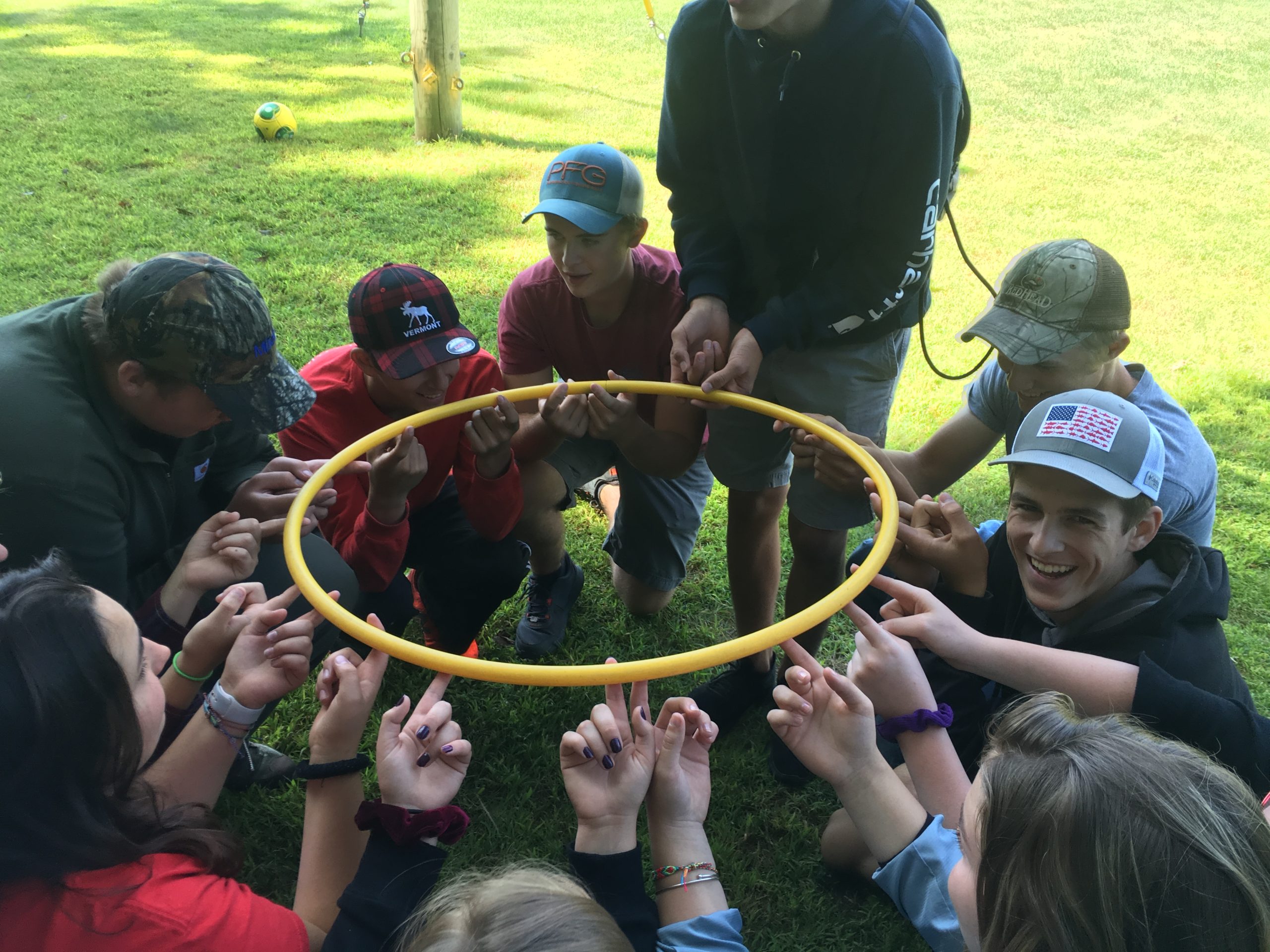
After the ropes course team building exercise, Mr. Dussault had another teamwork activity: the helium hoop. The task was to lower the hoop to the ground without anyone’s two fingers being removed. We all placed two fingers beneath the hoop while it was above our heads. At first the hoop moved up, but after some planning, we were able to lower the hoop to the ground successfully. After we achieved this in less than 30 seconds, Mr. Dussault stated that he was impressed by how quickly we were able to lower the hoop, according to him, faster than any other group he had before. This challenge helped all of us understand more about each other, and how we could best work together.
Tuesday, 8/27
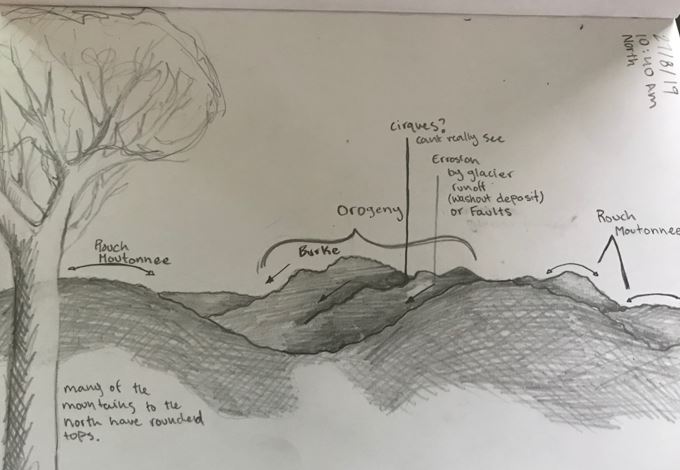
On Monday night our homework was a reading about geology. This reading discussed different types of rocks: sedimentary, metamorphic, and igneous. In addition to this, the reading covered the different types of mountains, rocks, and terrain. Tuesday’s first lesson at the Field Campus was on Vermont’s geology. After the lesson we went outside to study the view from just outside of the classroom. We observed and recorded what we saw, using the terminology that we had just learned. For instance, roche moutonnee (marked in the mid right hand side of the drawing) refers to a type of mountain formed by a glacier, with an asymmetric rounded peak. Orogeny is the creation of mountains by tectonic plates. This activity enabled the class to begin to understand the landscape around us while becoming more adept with the terminology.
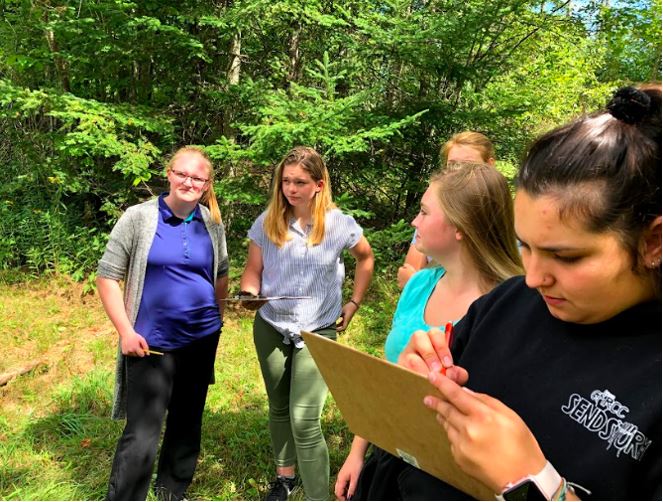
On Tuesday afternoon we went outside and toured the Field Campus to get a feel for the property. At the same time, we learned about signs of forest disturbances and how to identify them. At the beginning of the class we created a list of how the environment can be and is impacted. After figuring out some common disturbances, we went outside to see what we noticed. Out along the trails that surround our Field Campus we saw several signs including evidence of pasturing, logging, and natural disturbances such as blow downs. In the end, this walking tour not only helped us better understand our campus, but also to realize that even events that took place years ago have an impact on the environment and are still noticeable today.
Wednesday, 8/28 – Mount Jefferson
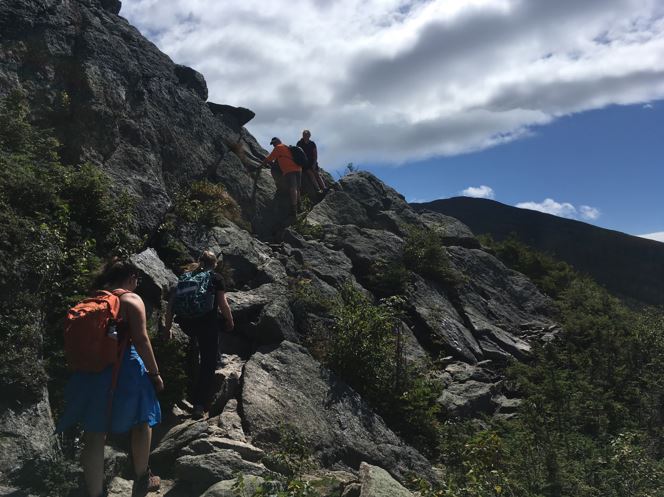
On Wednesday we hiked the Caps Ridge Trail on Mount Jefferson in the White Mountains of New Hampshire. Only being the third day with the group, we learned a lot about each other. We stopped at the beautiful views to group up and talk about the contrast between New Hampshire’s geology and that of Vermont. Once we broke the tree line It was a reward like no other. The view just kept getting better as we climbed over every cap. Although our class didn’t quite make it to the summit of Mt. Jefferson, it was a significant stepping stone in our process of team building. Not everyone was as experienced in hiking and we all worked together to ensure that everyone made it back to the trailhead safe and sound.
Thursday, 8/29
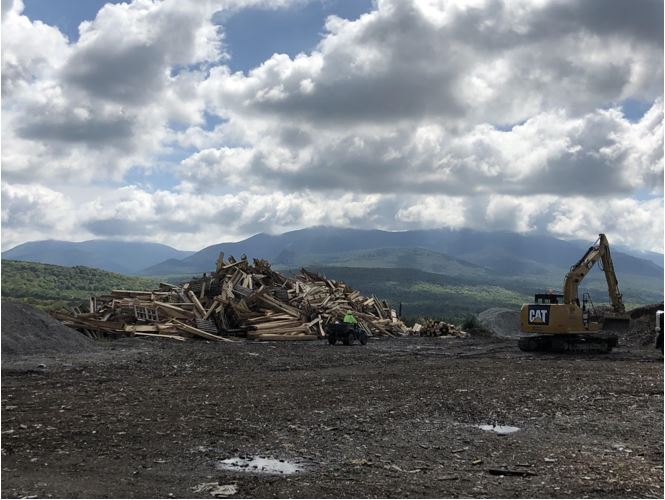
On Thursday we went to the Casella Landfill in Bethlehem, NH. We were given a detailed tour by Kevin Roy who oversees the site and is extremely knowledgeable of most everything that goes on in the landfill. We learned about all of the resources needed to operate and maintain this landfill. One significant long-lasting impact of this operation is that all water runoff from the landfill needs to be shipped to Concord, NH for treatment. In this photo, a pile of denailed lumber waits to be ground up and added to contaminated soil to prevent trash from being blown away by the strong winds, as they must cover over all new waste with wood chips and soil to prevent any sort of hazard.

